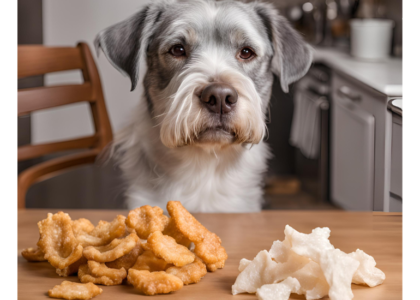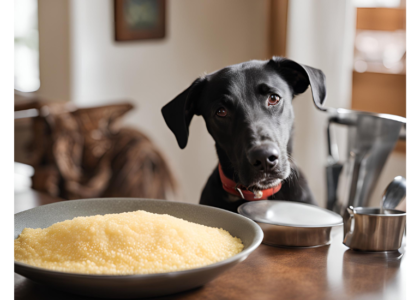Dogs should not eat jelly beans. These sweets can be harmful to their health.
Jelly beans are a popular treat among humans, especially during festive seasons like Easter. Yet, for our canine friends, they pose several risks. These colorful candies often contain sugar, xylitol, caffeine, and artificial sweeteners, all of which can be dangerous for dogs.
Xylitol, in particular, is toxic to dogs and can lead to liver failure and hypoglycemia. High sugar content can also cause dental problems and obesity. Moreover, the small size of jelly beans presents a choking hazard, especially for smaller dogs. Pet owners should be mindful of these risks and opt for dog-safe treats instead. Keeping your dog healthy and safe means being cautious about what snacks they get to enjoy.
Table of Contents
Understanding Jelly Beans
Many dog owners wonder if sharing a sweet treat like jelly beans with their furry friends is safe. Understanding jelly beans is key before letting dogs indulge. These colorful candies are not just sugar; they contain a mix of ingredients. Some of these ingredients can be harmful to dogs. It’s important to know what’s inside these small treats and their nutritional impact on canines.
Ingredients In Jelly Beans
Jelly beans are more than just a sweet snack. They are a complex mix of components that might not be right for your pet. Let’s break down what’s inside:
- Sugar: The main ingredient in jelly beans, which can lead to obesity and dental problems in dogs.
- Corn syrup: Another form of sugar that can cause similar health issues.
- Artificial coloring: These substances add vibrant colors to jelly beans but offer no health benefits to dogs.
Other ingredients include:
| Ingredient | Potential Risk |
|---|---|
| Starch | Can cause weight gain |
| Artificial flavors | May lead to allergic reactions |
| Xylitol | Highly toxic to dogs |
| Caffeine | Can be dangerous in large quantities |
Some jelly beans also contain chocolate, which is harmful to dogs. Always check the ingredients list before sharing any human foods with your pet.
Nutritional Value Of Jelly Beans
Jelly beans offer little to no nutritional value for dogs. Their main component is sugar, which dogs don’t need in their diet. Here’s what you should know about their nutritional content:
- Calories: Jelly beans are high in calories, which can contribute to weight gain.
- Carbohydrates: They are mostly made up of carbs, which can cause spikes in blood sugar levels.
- Fats: They have a low-fat content, but the type of fat is not beneficial for dogs.
Looking at the nutritional breakdown:
| Nutrient | Amount per 100g |
|---|---|
| Energy | 350 kcal |
| Sugar | 60g |
| Protein | 0g |
| Fat | 0g |
| Fiber | 0g |
With zero protein and fiber, these treats provide no nutritional advantages for dogs. Feeding dogs jelly beans can lead to long-term health issues like diabetes. It’s best to avoid giving jelly beans to your pet and stick to dog-safe treats instead.

Dogs’ Diet And Health
Dogs’ Diet and Health are crucial for any pet owner to understand. Jelly beans, a popular sweet treat, often tempt our furry friends. But are these sugary snacks safe for dogs? Pet owners must know what foods fit into a dog’s healthy diet. Let’s explore the dietary needs of canines and the risks involved with feeding them jelly beans.
Canine Dietary Requirements
Dogs thrive on a balanced diet tailored to their species-specific needs. Unlike humans, dogs require certain nutrients to stay healthy. Here’s a breakdown of what’s essential for a dog’s diet:
- Proteins: Vital for growth, maintenance, and energy.
- Fats: Source of energy and essential fatty acids.
- Carbohydrates: Provide energy and help with digestion.
- Vitamins and Minerals: Necessary for immune function and overall health.
- Water: Essential for all life functions.
It’s important to note that dogs need these nutrients in the right proportions. Here’s a simple table to show a general guideline:
| Nutrient | Recommended Proportion |
|---|---|
| Proteins | 18-25% |
| Fats | 5-15% |
| Carbohydrates | 30-70% |
| Vitamins and Minerals | Varies per specific needs |
| Water | Always accessible |
Commercial dog foods usually provide these nutritional requirements. However, treats like jelly beans are not part of this balanced diet.
Potential Risks Of Feeding Jelly Beans To Dogs
While jelly beans may seem harmless, they pose several health risks to dogs. Here are the main concerns:
- Sugar Content: High sugar can lead to obesity and dental problems.
- Artificial Sweeteners: Xylitol, a common sweetener, is toxic to dogs.
- Choking Hazard: Small candies can be a choking risk, especially for small dogs.
Dogs eating jelly beans may face the following issues:
| Risk | Consequence |
|---|---|
| Obesity | Joint problems, diabetes |
| Dental Issues | Tooth decay, bad breath |
| Xylitol Poisoning | Liver failure, seizures |
| Choking | Breathing difficulty, death |
Feeding jelly beans to dogs, even as a rare treat, is not advisable. Instead, opt for healthier snacks that meet their dietary needs. Always consult a vet before introducing new foods into your dog’s diet.
Effects Of Jelly Beans On Dogs
Many dog owners wonder if sharing a sweet treat like jelly beans with their furry friend is safe. Jelly beans may seem harmless, but they can have negative effects on dogs. Understanding these impacts is crucial for your dog’s health. Let’s explore how jelly beans can affect our canine companions.
Digestive Issues
When dogs eat jelly beans, they might face several digestive problems. Here are some reasons:
- Sugar content in jelly beans can lead to upset stomachs and diarrhea.
- The sweeteners used, especially xylitol, are toxic to dogs and can cause liver failure.
- Artificial colors and flavors may not sit well with a dog’s digestive system.
A table illustrating potential digestive issues:
| Ingredient | Possible Effect |
|---|---|
| Sugar | Stomach upset, weight gain |
| Xylitol | Liver damage, hypoglycemia |
| Artificial additives | Nausea, vomiting |
Even small amounts can cause issues. If your dog sneaks a jelly bean, watch for signs like lethargy, vomiting, or diarrhea. Contact your vet if you notice any of these symptoms.
Allergic Reactions
Dogs can have allergic reactions to ingredients in jelly beans. Here are key points:
- Some dogs may be allergic to food dyes or certain flavors in jelly beans.
- Signs of an allergic reaction include itching, swelling, and difficulty breathing.
- It’s vital to identify allergies early and avoid giving jelly beans to your dog.
Watch for these symptoms:
| Symptom | Action |
|---|---|
| Itching or hives | Contact vet immediately |
| Swelling of face or paws | Seek emergency care |
| Trouble breathing | Rush to animal hospital |
Immediate vet care can prevent more serious consequences. Always keep a close eye on your dog and avoid sharing foods that can cause harm.
Signs Of Jelly Bean Poisoning In Dogs
Jelly beans contain sugar, xylitol, caffeine, and other substances that are toxic to dogs. Knowing the signs of jelly bean poisoning is critical for any dog owner. Quick action can save your pet from serious health issues. Let’s explore the symptoms and steps to take if your dog consumes jelly beans.
Symptoms To Look Out For
Dogs may show several signs of jelly bean poisoning, which require immediate attention. These include:
- Vomiting: Your dog may throw up, trying to get rid of the toxic substance.
- Diarrhea: Watch for loose or watery stools.
- Lethargy: Your dog may seem unusually tired or weak.
- Loss of Appetite: Your dog might not want to eat.
- Tremors: Shaking or seizures could occur if they ate a lot of jelly beans.
- Increase in Heart Rate: Their heart may beat faster than usual.
These symptoms can lead to more severe health problems if not treated. Keep a close eye on your pet and note any strange behavior after they have eaten jelly beans. The table below summarizes potential signs of poisoning:
| Symptom | Severity |
|---|---|
| Vomiting | Moderate |
| Diarrhea | Moderate |
| Lethargy | High |
| Tremors | Severe |
| Increased Heart Rate | Severe |
What To Do If Your Dog Eats Jelly Beans
If your dog eats jelly beans, act quickly to help them. Here are steps you should take:
- Stay Calm: Panicking won’t help your dog. Take a deep breath and prepare to act.
- Identify the Amount: Check how many jelly beans your dog ate. More beans mean a higher risk.
- Check Ingredients: Look for xylitol, caffeine, or chocolate. These are very dangerous for dogs.
- Contact Your Vet: Call your vet immediately. They will give you the best advice.
- Follow Instructions: Your vet may tell you to induce vomiting or come to the clinic. Do as they say.
Remember, do not try home remedies without consulting your vet. They know what’s best for your dog’s health. Keep all sweets, like jelly beans, away from your dog. Prevention is always better than cure. Your dog’s health and safety are the top priorities.
Frequently Asked Questions
Are Jelly Beans Safe For Dogs?
Jelly beans are not safe for dogs. They contain sugar and artificial sweeteners like xylitol, which can be toxic to dogs. Moreover, jelly beans may cause choking hazards or digestive issues.
What Happens If A Dog Eats Jelly Beans?
If a dog eats jelly beans, they might experience digestive distress, such as vomiting or diarrhea. Xylitol-containing beans can lead to more severe symptoms like hypoglycemia, liver failure, or even death. Contact a vet immediately if symptoms appear.
Can Jelly Beans Cause Allergies In Dogs?
Yes, jelly beans can cause allergies in dogs. Ingredients like food dyes and artificial flavors may trigger allergic reactions. Symptoms can include itching, swelling, and digestive issues. It’s best to avoid giving them to dogs entirely.
How Many Jelly Beans Are Toxic To Dogs?
The toxicity of jelly beans can vary based on the ingredients. Even a small amount containing xylitol can be dangerous. It’s important to keep any sweets, especially those with xylitol, away from dogs.










